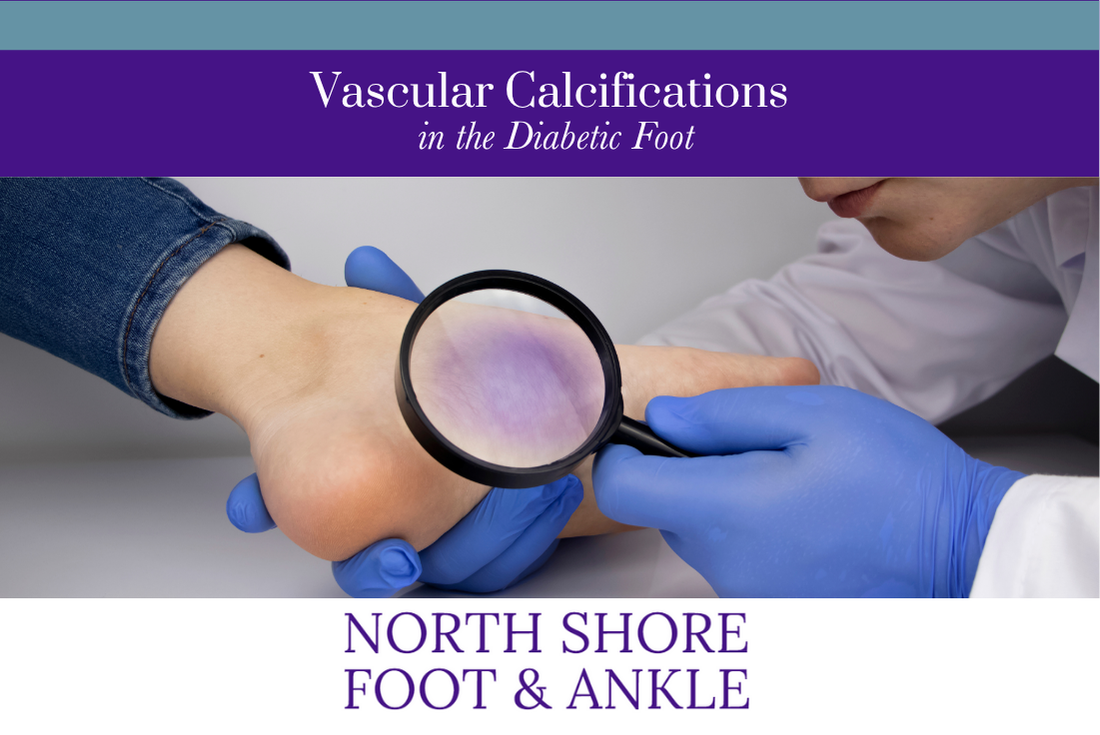
Patients with diabetes face a range of complex health challenges, including the risk of vascular calcifications in their feet. This condition, characterized by the buildup of calcium deposits in the blood vessels, can significantly impact circulation, wound healing, and overall foot health. Understanding the causes, symptoms, and treatment options for vascular calcifications is essential for effective management and prevention.
What Are Vascular Calcifications?
Vascular calcifications refer to the accumulation of calcium in the walls of blood vessels. In diabetic patients, this buildup often occurs in the lower extremities, particularly the arteries supplying the feet and legs. Unlike the soft, flexible arteries found in healthy individuals, calcified arteries become stiff and less responsive, reducing blood flow and increasing the risk of severe complications like ulcers, infections, and even amputations.
Why Are Diabetics More Prone to Vascular Calcifications?
Several factors contribute to the higher risk of vascular calcifications in people with diabetes, including:
- High Blood Sugar Levels: Chronic hyperglycemia damages the lining of blood vessels, making them more susceptible to calcification.
- Inflammation: Diabetes often triggers chronic inflammation, which accelerates arterial stiffening.
- Advanced Glycation End Products (AGEs): These harmful compounds form when proteins or fats combine with sugar in the bloodstream, promoting vascular damage.
- Peripheral Artery Disease (PAD): Many diabetics also suffer from PAD, a condition that restricts blood flow to the limbs, compounding the effects of calcification.
Symptoms of Vascular Calcifications in the Diabetic Foot
Common signs and symptoms include:
- Pain or cramping in the legs, especially during physical activity (claudication)
- Cold or pale feet
- Non-healing sores or wounds
- Numbness or tingling in the feet
- Changes in skin color or texture
- Reduced hair growth on the legs and feet
Diagnosing Vascular Calcifications
Diagnosing this condition typically involves:
- Ankle-Brachial Index (ABI): Measures blood flow in the legs compared to the arms.
- Doppler Ultrasound: Assesses blood flow and detects blockages.
- X-Rays or CT Scans: Reveal the presence and extent of calcifications.
- Magnetic Resonance Angiography (MRA): Provides a detailed view of blood vessels without the use of invasive techniques.
Treatment Options
Treatment for vascular calcifications focuses on improving blood flow, managing diabetes, and reducing the risk of complications. Options may include:
- Medications: Blood thinners, cholesterol-lowering drugs, and medications to improve blood vessel flexibility.
- Lifestyle Changes: Exercise, smoking cessation, and a heart-healthy diet.
- Surgical Procedures: In severe cases, angioplasty, stent placement, or bypass surgery may be necessary.
- Wound Care: Proper foot care to prevent ulcers and infections.
Preventing Vascular Calcifications
- Maintain tight blood sugar control
- Regularly exercise and maintain a healthy weight
- Quit smoking and limit alcohol intake
- Manage cholesterol and blood pressure
- Regular foot exams and screenings
Q&A Section
Q: How can I reduce my risk of vascular calcifications if I have diabetes?
A: Regular exercise, maintaining tight blood sugar control, eating a heart-healthy diet, and avoiding smoking can significantly reduce your risk.
Q: Are vascular calcifications reversible?
A: While existing calcifications cannot be completely reversed, their progression can be slowed or halted with proper management.
Q: Should I see a podiatrist if I have diabetes?
A: Yes, regular visits to a podiatrist can help prevent complications and catch problems early.
Q: Can vascular calcifications cause amputation?
A: In severe cases, reduced blood flow and chronic wounds can lead to amputation if not properly managed.
Contact North Shore Foot & Ankle
Lynbrook Podiatry Office
50 Hempstead Ave, Ste B
Lynbrook, NY 11563
Phone: (516) 599-0302
Syosset Podiatry Office
175 Jericho Turnpike, Suite 300
Syosset, NY 11791
Phone: (516) 496-7676
Flushing Podiatry Office
72-03 164 St.
Flushing, NY 11365
Phone: (718) 591-3320
Rosedale Podiatry Office
140-04 248 St
Rosedale, NY 11422
Phone: (718) 949-4844
Plainview Podiatry Office
1144 Old Country Rd
Plainview, NY 11803
Phone: (516) 942-0620
For more information or to schedule an appointment, please call the office nearest you.








